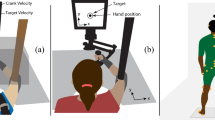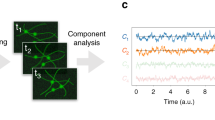Abstract
FOR all sense-organs there exists a lower limit to the minimum perceptible energy, which is set by the Brownian motion in the sensory equipment itself. The minimum perceptible energy must be so large that only a small number of spontaneous excitations by thermal motion can occur. The quantitative relations have been estimated tentatively in certain cases.
This is a preview of subscription content, access via your institution
Access options
Subscribe to this journal
Receive 51 print issues and online access
$199.00 per year
only $3.90 per issue
Buy this article
- Purchase on SpringerLink
- Instant access to full article PDF
Prices may be subject to local taxes which are calculated during checkout
Similar content being viewed by others
References
Hecht, S., et al., J. Gen. Physiol., 25, 819 (1942).
Velden, H. A. v. d., Physica., 11, 179 (1944).
Fowler, R. H., and Guggenheim, S. A., "Statistical Thermodynamics", 529 (Cambridge Univ. Press, 1939).
Broda, H., Goodeve, C. F., and Lythgoe, R. J., J. Physiol., 98, 397 (1940).
Hill, A. V., "Chemical Wave Transmission", 26 (Cambridge Univ. Press, 1932).
Author information
Authors and Affiliations
Rights and permissions
About this article
Cite this article
DE VRIES, H. Minimum Perceptible Energy and Brownian Motion in Sensory Processes. Nature 161, 63 (1948). https://doi.org/10.1038/161063b0
Issue date:
DOI: https://doi.org/10.1038/161063b0
This article is cited by
-
Chemistry of Visual Processes
Nature (1948)
-
Aural Sensitivity and Heart Beats
Nature (1948)
-
Die Reizschwelle der Sinnesorgane als physikalisches Problem
Experientia (1948)



